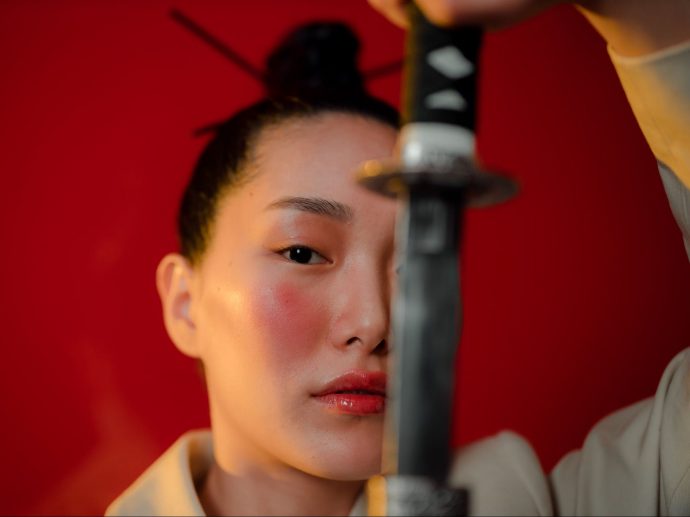Categories more
- Adventures (17)
- Arts / Collectables (15)
- Automotive (37)
- Aviation (11)
- Bath, Body, & Health (77)
- Children (6)
- Cigars / Spirits (32)
- Cuisine (16)
- Design/Architecture (22)
- Electronics (13)
- Entertainment (4)
- Event Planning (5)
- Fashion (46)
- Finance (9)
- Gifts / Misc (6)
- Home Decor (45)
- Jewelry (41)
- Pets (3)
- Philanthropy (1)
- Real Estate (16)
- Services (23)
- Sports / Golf (14)
- Vacation / Travel (60)
- Watches / Pens (15)
- Wines / Vines (24)
- Yachting / Boating (17)
Collecting Japanese Swords - Top 5 Considerations
Published
05/16/2023Collecting Japanese swords can be a fascinating and rewarding hobby, but it's important to approach it with care, consideration and most importantly, respect.
Here are the top five things to keep in mind when starting a Japanese sword collection:
Considerations When Building a Sword Collection
Education
One of the most important aspects of collecting Japanese swords is education. Before you start purchasing swords, it's important to understand the different types of Japanese swords, their history, and their value.
There are many resources available to help you learn about Japanese swords, including books, online forums, and sword collecting clubs. Take the time to research and educate yourself before you start buying swords.
Authenticity
When it comes to Japanese swords, authenticity is key. There are many counterfeit swords on the market, so it's important to purchase swords from reputable dealers or auction houses. Look for sellers who have a strong reputation and who can provide detailed information about the sword's provenance and history. If possible, have the sword authenticated by a professional appraiser or sword expert before making a purchase to ensure you’re adding a quality sword to your collection. Buying from a seller with a good reputation will ensure you get only the best swords. If you're a fan of anime, you can get original and high-quality replicas from your favorite shows, such as the Wind Hashira sword. Having such a collection is a thing of pride, as well as a conversation starter any day.
Condition
The condition of a Japanese sword is another important consideration. Swords that are in good condition and have been well-maintained will generally be more valuable than swords that are damaged or poorly maintained. Look for swords that have been well-cared for and that have minimal signs of wear or damage. If you're purchasing a sword that needs repairs or restoration, factor those costs into your budget.
Purpose
Before you start collecting Japanese swords, it's important to consider your purpose for collecting. Are you interested in the historical and cultural significance of the swords, or are you more interested in their value as an investment?
Do you plan to display your swords or use them for martial arts training? Understanding your purpose for collecting will help you make more informed purchasing decisions and will guide your overall collection strategy.
Budget
Finally, it's important to consider your budget when collecting Japanese swords. Authentic Japanese swords can be quite expensive, with prices ranging from several thousand dollars to tens of thousands of dollars or more. It's important to set a budget for your collection and to stick to it.
You may also want to consider purchasing swords gradually over time rather than trying to build your collection all at once.
In addition to these considerations, it's also important to follow best practices for sword care and maintenance. Japanese swords are delicate instruments that require special care and attention. Proper maintenance and storage will help preserve the value and beauty of your collection.
What Types of Japanese Swords Can You Collect?
There are several types of Japanese swords that are commonly available for purchase. Here are some of the most popular types:
Katana
The katana sword is perhaps the most well-known sword not just in Japan but around the world. It has a curved, slender blade that is usually around 24-30 inches long and was traditionally used by samurai in battle and is still commonly used in martial arts training today.
Wakizashi
The wakizashi is a shorter sword that is typically between 12-24 inches long. It was traditionally used as a backup weapon to the katana or as a sidearm for samurai. Wakizashi are often paired with a katana in a set called daisho.
Tanto
The tanto is a small, straight-edged knife with a pointed tip. It is usually between 6-12 inches long and was traditionally used as a secondary weapon by samurai. Tanto blades are often thicker and stronger at the tip, making them ideal for thrusting and piercing.
Tachi
The tachi is a long, curved sword that was used by samurai on horseback. It has a blade length similar to the katana, but is longer overall to accommodate the rider's height. The tachi is worn suspended from the waist with the cutting edge down, whereas the katana is worn with the cutting edge up.
Naginata
The Naginata is a long polearm with a curved blade on the end. It was used by samurai as a weapon against cavalry and for crowd control. The naginata is still used in martial arts training today.
Yari
The yari is a type of spear with a straight, pointed blade. It was also used by samurai and was particularly effective against mounted opponents. The yari is still used in martial arts training today.
These are just a few examples of the many types of Japanese swords that are available for purchase. Each type of sword has its own unique characteristics and history, making them fascinating objects of study and collection.
Conclusion
In summary, educate yourself about Japanese swords, purchase swords from reputable dealers, consider the sword's condition and purpose, set a budget, and follow best practices for sword care and maintenance. With these considerations in mind, you can build a beautiful and valuable Japanese sword collection that you can enjoy for years to come.















